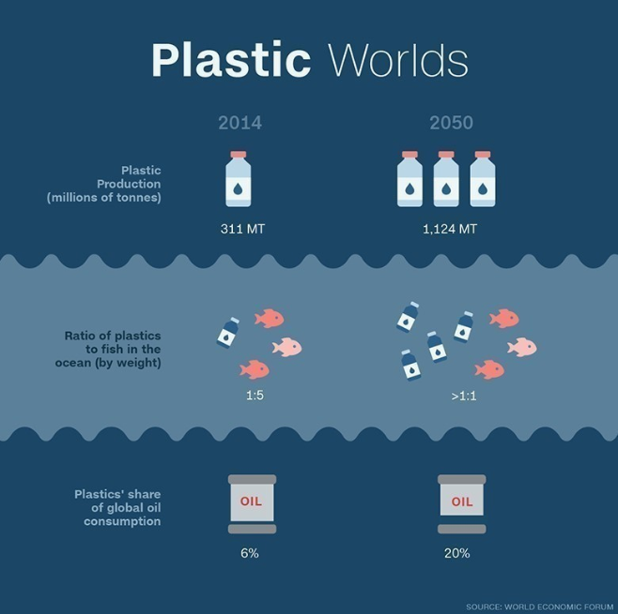Oceans of Plastic
Asia’s Plastic Problem Is Choking the World’s Oceans. Here’s How to Fix It

Source:Kuo-Tai Liu
Every year 8 million tonnes of discarded plastic ends up in the ocean, and the situation is getting worse. According to a World Economic Forum report, under the current mode and growth of plastic usage, there will be more plastic than fish in the ocean (by weight) by 2050.
Views
Asia’s Plastic Problem Is Choking the World’s Oceans. Here’s How to Fix It
By Johnny Woodweb only
ASEAN member states are among the world’s biggest sources of plastic pollution. More than half of the plastic waste in the ocean comes from just five Asian countries: China, Indonesia, the Philippines, Vietnam and Thailand, according to a 2017 report by the Ocean Conservancy and the McKinsey Center for Business and Environment.
Every year 8 million tonnes of discarded plastic ends up in the ocean, and the situation is getting worse. A World Economic Forum report estimates that, unless we clean up our act, there will be more plastic than fish in the ocean (by weight) by 2050.
 Image: World Economic Forum
Image: World Economic Forum
Rivers of Plastic
Much of the pollution comes from rivers which carry mismanaged plastic waste to the ocean. A study by scientists from the Helmholtz Centre for Environmental Research found that 90% of ocean plastic originated from only 10 rivers, eight of which are in Asia.
The region’s key waterways all support large populations living nearby who rely on poor – and sometimes nonexistent – waste management systems. Uncollected waste is discarded into rivers which then carry it to the sea.

Image: Environmental Science & Technology
While cleanup efforts are to be applauded, picking up debris washed ashore on beaches and along coastlines deals with the effect rather than the root cause of the problem.
To combat the rising tide of ocean pollution, we need to work on changing the central role that plastic plays in daily life.
Governments across Asia are waking up to the devastating ecological and financial costs of polluted rivers and oceans. China, the biggest producer of plastic waste, has begun to tackle the problem. In addition to banning waste imports, it has pledged to reach a 35% recycling rate across 46 cities by 2020.
India wants to eliminate all single-use plastic in the country by 2022, and has introduced an immediate ban in Delhi.
Other Asian nations, such as Bangladesh, have banned plastic bags, though enforcement has been patchy.
Tackling the Problem at Source
Pointing an accusatory finger at consumers for using too much plastic is like blaming car owners for traffic congestion. If plastic production was decreased there would be less available for people to use.
Just as government policy can restrict the use of plastic products by consumers it can also guide the behaviour of producers.
Imposing taxes and limits on the quantity and type of plastics produced can be an effective way to lower production. Another potential government approach is to provide incentives to encourage producers to develop alternatives to non-biodegradable plastics.
Building and urban planning regulations can also be designed to encourage the use of environmentally-friendly materials.
Increasing recycling rates and reducing the amount of plastic in everyday use are positive first steps, but government policy could go much further. For example, through raising public awareness of the problem and providing alternatives to dumping waste in rivers by creating workable waste collection and management systems.
Of course, organizing and financing effective waste collection is no easy task. Community-based projects have met with success in places like Malaysia, as have private-public partnerships. One option is for governments to pay recycling fees to private firms for collecting plastic waste, and to include incentives to transform it into reusable goods to sell.
Creating a Sustainable Future
Innovation has a central role to play in creating alternatives to plastic, developing circular economy-based solutions and also in finding uses for the mountains of waste that already exist.
Private firms have developed compostable alternatives to plastic packaging that biodegrade quickly, eliminating the problem of debris hanging around for years. A UK firm has taken this idea one step further and produced packaging that can be eaten along with the food inside it. Similarly, an Indonesian startup has produced food wrappers and sachets from seaweed, which can also be consumed.
Numerous small-scale initiatives are being launched each year, some of which can be scaled up to meet regional demand.
Other projects aim to exploit the plentiful, cheap supply of waste plastic. In parts of rural India, workers have constructed more than 34,000 km of roads from shredded plastic waste. As well as having an unusually high resistance to the country’s searing temperatures, each kilometre costs 8% less to construct than conventional roads.
The road scheme creates work for local fishermen who are paid to dredge debris from the ocean and also for plastic pickers on land. Several small privately-owned shredding businesses have also sprung up in the area.
As population growth and industrialization continue across Asia, more demands will be put on its fragile ecosystems. Finding ways to reduce plastic waste, manage it responsibly and encourage the creation of viable alternatives will be key to a sustainable future for the region.
Edited by Shawn Chou
Additional Reading
♦ Island-Nations Echoing Each Other by Declaring War Against Plastic Straws
♦ From Uniforms to Shoes, Taiwan Is a Major World Cup Player
♦ Time to Say Goodbye to Plastic Straws, but What's the Best Alternative?
Original content can be found at the website of World Economic Forum.
♦ Asia’s plastic problem is choking the world’s oceans. Here’s how to fix it
This article is reproduced under the permission of World Economic Forum (WEF) and terms of Creative Commons Attribution-NonCommercial-NoDerivs 4.0 Unported License (“CCPL”). It presents the opinion or perspective of the original author / organization, which does not represent the standpoint of CommonWealth magazine.







